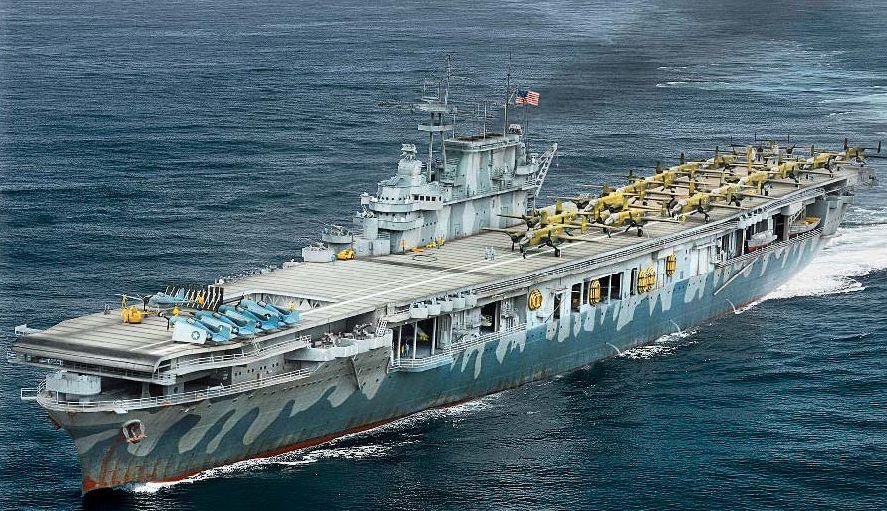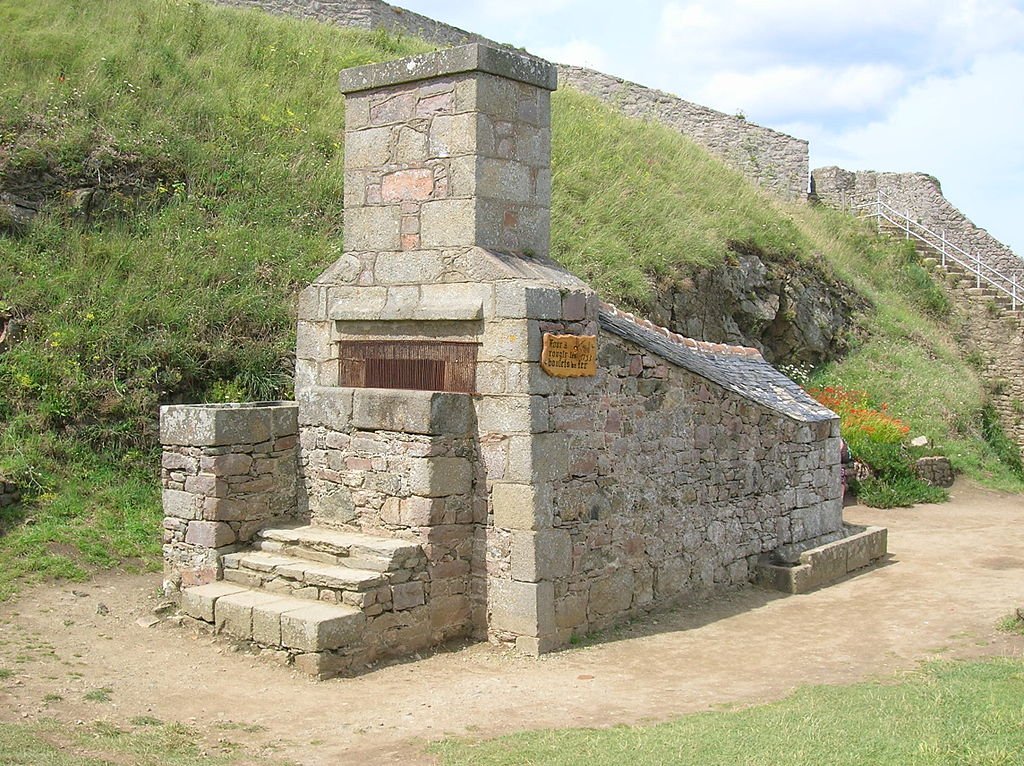-
Posts
4,377 -
Joined
-
Last visited
Content Type
Profiles
Forums
Gallery
Events
Everything posted by Egilman
-
I stand corrected..... The PBJ when first built exclusively used the Bendix 250CE-3 & 4 top turret, it was a partial framed turret.... https://www.ibiblio.org/hyperwar/USN/ref/AirGunnery/TURRETS5.html (scroll down for the top turret) There are lots of shots of B-25's with non-framed Everson, (which most of them had when built) or restored postwar with the readily available surplus Martin B-26 top turrets, but the Bendix was also manufactured as a wartime field replacement...... Nevertheless, the original PBJ had a framed forward top turret....
-
Round ball fused shot, commonly known as "Bombs" as in "Bombs bursting in air" from the National anthem were around since the 1300's, in the late 1700's the british refined them by adding a sabot, a round piece of wood so the fuse would always face the muzzle when loaded.... lighting the fuse was enacted by the flash blowby in the barrel from the propelling charge.... they were an effective anti personnel weapon but the fusing was completely unreliable only actually working about 40% of the time..... Just before the civil war they went to pointed "Bombs" which were a bit more reliable but still less than 60% effective.... During and shortly after the civil war they went to percussion fuses and detonators which made them 80% effective..... Grenades date back as far as the 1200's.....
-
Yes in fact heated shot was long used by French and British forces, (mostly naval forces) from the early 1700's.... so it's entirely possible that both sides used it..... Below a hot Shot furnace built just before 1800 at Fort-la-latte in France.... In 1792, the Austrian forces besieging Lille used heated shot against the city, which was described as a war crime by the French Republican press. The last known use of Hot Shot was by the ironclad CSS Virginia against the USS Congress during the Civil War successfully setting her afire.... So yeah it's entirely possible.....
-
Got a pic brother, it is of Kenmore House which was used as a union hospital several times during the civil war, Several of the Battles it was involved in were Fredrickson, The Wilderness , Spotsylvania court house to name a few... It was hit with 11 cannonballs during the war, and this one photo shows the damage resulting from the cannonball penetrating a wood framed roof.... 3x4 timber rafter framing with a 1" board sheathing with a slate roof over that at the time of the war..... You can see how the wood splinters to the inside of the hole and would leave fractured tiles on the outside.... A relatively small hole.....
-
Well the timbering and lengthwise beams would be the same, but they would nail or peg the slate tiles to the roof, I would surmise that the damage would be represented by a hole surrounded by missing and broken slate tiles, the slate being a dark bluish grey wouldn't show a lot of smoke damage.... I would tile the roof using plates of a suitable material and paint a black spot on the MDF underneath to represent the hole. you probably wouldn't see the timbering cause the timbers would fracture out from underneath the plates leaving nothing but the jagged slate edges..... I'll do some research.....
-
That era and period it would be a thatched roof, and the day being cloudy and rainy it would have been damp so difficult to really get a fire started, a good dousing would eliminate that threat rather quickly..... Underneath would be timbers making up the sloped form of the roof with cross wise lattices running lengthwise to tie the thatch bundles to..... A good solution would be to cover the roof with thatch and scorch a part of it along one edge feathering the scorch out in a fan pattern, you wouldn't need a hole per-se just a semi circular scorch pattern..... There isn't a lot of information on it, except that the KGL managed to put it out before it did major damage....
-
Tank Urban Survival Kits (TUSK) has had two phases Tusk I was the square reactive explosive armor, Tusk II added a few enhancements like the tile shaped charges on top of the square block charges and grid armor to the rear of the tank to improve it's RPG protection... They added a .50 cal to the main gun barrel to add infantry level offensive protection to the infrared targeting system, gun shields to the commander position and several electronics upgrades to make it more survivable in a city environment against irregular troops.... They were first used in Iraq during the first occupation, and upgraded when the insurgents learned how to destroy an abrams with rather crude devices..... (well not so much as destroy it, but render it useless for combat) In places where the threat is more conventional, (normal armor operations against field forces like in Europe) TUSK is not deployed cause it hampers the tanks cross country mobility..... The upgrade kit is TUSK II and you wouldn't see it anywhere except in a city environment....
-
I agree we are well overdue for several classes of US Cruisers in injection molded plastic.... the Brooklyns head that list....
- 179 replies
-
- hatsuzakura
- pit road
-
(and 2 more)
Tagged with:
-
The Brooklyn class ships were a direct response to the "Mogami" class cruisers of the IJN... (which stunned the world's navies when they were revealed)..... A class of 35+knot ships with 15 rapid fire 6" guns and 8 5" guns... (when the Japanese abrogated the treaty their 6" guns were removed and replaced with 10 8" guns in five turrets in which configuration they served through the war) All designed after the London treaty which limited Heavy cruisers construction and classified cruisers by their gun calibre 6.1 and larger were "Heavy" and 6" or less were considered "Light"...... That was the inspiration for the Brooklyn class...... Very long legged, fast, cruisers that could be used for either commerce raiding or carrier escort as originally envisioned and that could hold their own in a gun battle against any heavy cruisers then in existence..... (given the limitations of the treaty) Of the nine ships built only one was lost during the war, the USS Helena CL-50 to long lance torpedoes..... The last two, the USS St Louis CL-49 and the USS Helena CL-50, were modified Brooklyn's having their antiaircraft armament changed from six 5"25's to 8 5"38's (in twin turrets) The Japanese after the Battles of Savo island and the guadalcanal naval campaign had a nickname for them calling them "Machine gun cruisers" they particularly didn't like them.... Their hulls were based upon the preceding 10K ton New Orleans class heavy cruiser hulls redesigned (longer) to make them faster the only reason they weren't classified as heavy cruisers was the treaty, and as the Japanese action of upgunning their Mogami class to 8" guns showed they were very capable of handling such armament.... Their hulls were the basis of every US cruiser designed from that point forward including the Baltimore class of heavy cruisers and several of the light aircraft carriers (from cleveland class, modified brooklyn hulls) Probably the most capable gun cruisers ever built up to that point in time..... I'm condensing and paraphrasing a lot of Norman Friedman's US Cruisers an illustrated design history (amazon link) here... well worth the read.....
- 179 replies
-
- hatsuzakura
- pit road
-
(and 2 more)
Tagged with:
-
You got the talent brother.... no question..... I think it's going to look spectacular.....
- 179 replies
-
- hatsuzakura
- pit road
-
(and 2 more)
Tagged with:
-
I agree Lou, after the Hipper Class Cruisers, the St Louis Class and Brooklyn classes are my favorites, followed by the Cleveland class Brooklyn derivatives.... Beautiful ships all.....
- 179 replies
-
- hatsuzakura
- pit road
-
(and 2 more)
Tagged with:
-
Scale accuracy has to give somewhere brother, and yes they would looks junky/clunky in 1/350.... But then they mk1 eyeball doesn't have the ability to sort resolutions that small.... They look best from about 8-10" away... Where 1/350th it's about 24"...... You do know that with this experience you can build anything? Also, that folding 1/350 isn't the same..... Beautiful work my friend, work that I cannot do.....
- 179 replies
-
- hatsuzakura
- pit road
-
(and 2 more)
Tagged with:
-
Ney at Waterloo cost Nappy the battle...... LHS was the key to the British position, the longer it held the longer they had to prepare for the centre assault they knew was coming.... When Ney finally took it the British were prepared for the final act with cannon overlooking everything with the French channeled into their fields of fire.... He did not understand fully the importance of the position and why Nappy wanted it taken early....
About us
Modelshipworld - Advancing Ship Modeling through Research
SSL Secured
Your security is important for us so this Website is SSL-Secured
NRG Mailing Address
Nautical Research Guild
237 South Lincoln Street
Westmont IL, 60559-1917
Model Ship World ® and the MSW logo are Registered Trademarks, and belong to the Nautical Research Guild (United States Patent and Trademark Office: No. 6,929,264 & No. 6,929,274, registered Dec. 20, 2022)
Helpful Links
About the NRG
If you enjoy building ship models that are historically accurate as well as beautiful, then The Nautical Research Guild (NRG) is just right for you.
The Guild is a non-profit educational organization whose mission is to “Advance Ship Modeling Through Research”. We provide support to our members in their efforts to raise the quality of their model ships.
The Nautical Research Guild has published our world-renowned quarterly magazine, The Nautical Research Journal, since 1955. The pages of the Journal are full of articles by accomplished ship modelers who show you how they create those exquisite details on their models, and by maritime historians who show you the correct details to build. The Journal is available in both print and digital editions. Go to the NRG web site (www.thenrg.org) to download a complimentary digital copy of the Journal. The NRG also publishes plan sets, books and compilations of back issues of the Journal and the former Ships in Scale and Model Ship Builder magazines.






